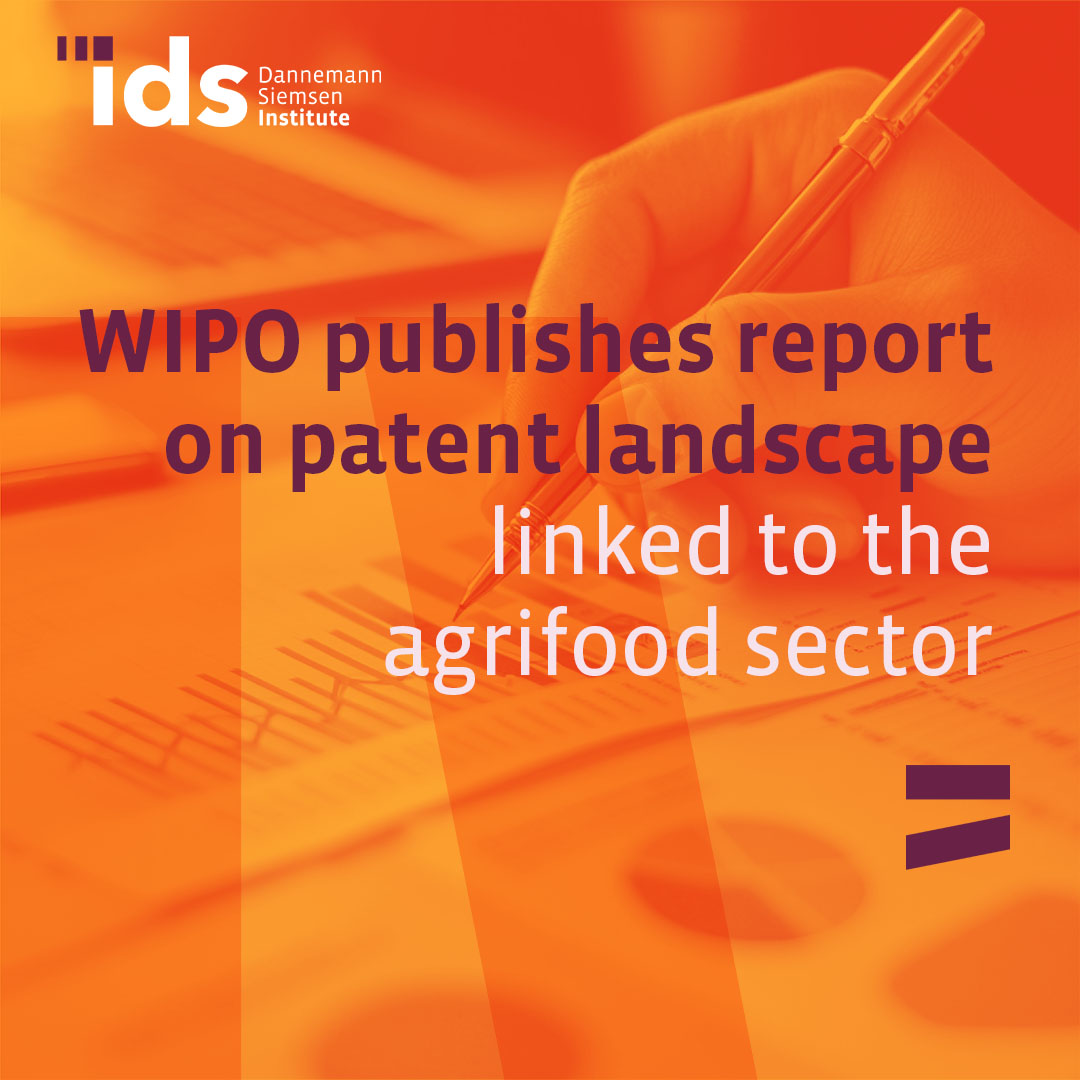10 de outubro de 2024
Share
WIPO publishes report on patent landscape linked to the agrifood sector
On September 10, the World Intellectual Property Organization (WIPO) published its report entitled “Patent Landscape Report on Agrifood”, which outlines a panorama of patents linked to the agrifood sector, including plant varieties. The document aims to provide a comprehensive and up-to-date overview of the latest trends on patents and plant varieties in the agrifood field, including those related to innovation and technological advances in five case study areas across the sector. Thus, among the topics covered, the report highlights: soil and fertilizer management; pest and disease management without pesticides; alternative sources of nutrients for human food; predictive models in precision agriculture and autonomous devices in precision agriculture.
In its first part, the report highlights some of its key findings. Here, it highlights: (i) the leadership of WIPO and the US as the two main filing authorities of international patent families in AgriTech and FoodTech; (ii) the reduction in US growth in the agri-food field, in the face of rapid growth in India and China; (iii) the prominence of large agrochemical companies, technology companies and agricultural machinery manufacturers in innovation in the AgriTech field, while FoodTech is dominated by large food companies.
The WIPO report then explains the context of the research, as well as the objectives and scope, i.e. to provide observations on patenting activity in the field of agri-food technologies. It then clarifies the importance of innovative technologies, policies and practices in the agri-food sector, the aim of which is to promote useful, efficient, sustainable and resilient initiatives that support food security for future generations, based on a holistic approach that strengthens the production, processing and distribution of food and agricultural products. Here, the text also notes that the Agrifood sector is made up of two domains: AgriTech (the application of cutting-edge technologies to increase crop yields, optimize water use and improve soil health) and FoodTech (the development of innovative solutions for the production, processing and supply of food, with an emphasis on sustainability, food safety and nutrition).
The document also provides a global overview of patents in the agri-food sector. In this chapter, the WIPO explains that its report focuses on the so-called international patent families, i.e. groups of patents aimed at foreign countries, inventions that applicants consider important enough to seek international protection. In this part, it analyzes global patent trends, origins of inventions, main markets for technologies and main participants in the 17 subdomains of AgriTech and the 6 subdomains of FoodTech.
The first of the report’s 5 case study areas deals with soil and fertilizer management, summarizing patent trends in the field and discussing emerging technologies such as autonomous guidance and fertilizer formulations. As set out in the document, patents filed in Brazil, Argentina and India showed remarkable growth, with CAGRs (compound annual growth rates) of 15.0%, 12.8% and 11.4% from 2017 to 2021, respectively. The report also highlights the field of pesticide-free pest and disease management, i.e. innovations designed to control crop pests without relying on chemical pesticides. In this area, WIPO processed the largest number of international patent families, totaling 7,959, mostly through the PCT route. The United States comes next, with 7,258 international patent families filed and, in third place, the EPO (Europe) accounts for a total of 5,240 international patent families. Here, Brazil stands out in Latin America, with 2,576 international patent families.
In the field of alternative sources of nutrients for human nutrition, creative food solutions are analyzed, based on alternatives such as plant-based foods, insect proteins, precision and biomass fermentation, cell-based meat and molecular agriculture. In this area, patent filings are led by the PCT (WIPO), with 7,812 international patent families, followed by the United States, with 7,161 international patent families, and Europe, with 5,982 international patent families. Brazil is once again the leader in Latin America, with 2,901 international patent families.
The predictive models plan in precision agriculture deals with the use of technologies such as artificial intelligence and software development to predict market demand and optimize planting and irrigation plans, thus improving the precision and efficiency of agricultural production. According to the report, the United States is the leader in research and development of predictive models dedicated to the agri-food sector, with a total of 809 international patent families. However, the document indicates that this is a rapidly developing area in Europe (823) and Asia (with China and Japan having 136 and 106 international patent families, respectively).
Finally, the last of the fields pointed out by WIPO, concerning autonomous devices in precision agriculture, discusses the application of autonomous and robotic machines in precision agriculture to increase the efficiency of planting, managing, irrigating and harvesting crops. On this topic, the report highlights the leadership of Europe, North America and Asia in R&D on autonomous devices in precision agriculture, with growing interest from Brazil, Japan, South Korea and the United Kingdom. According to the document, Brazil showed a significant CAGR of 69.5%, followed by Japan with 38%.
The WIPO report can be accessed via the link: Patent Landscape Report – Agrifood
Note: For quick release, this English version is provided by automated translation without human review.
